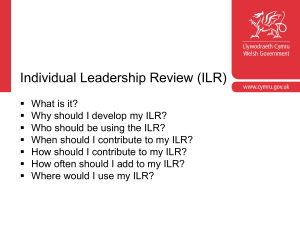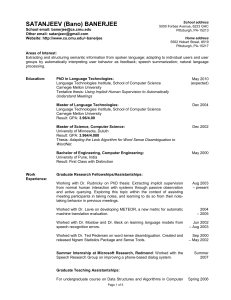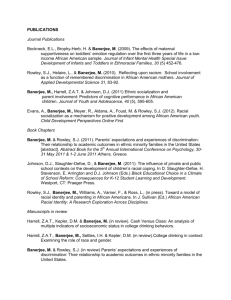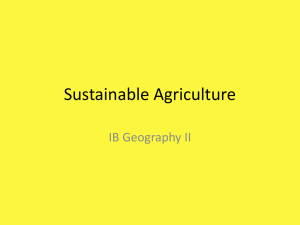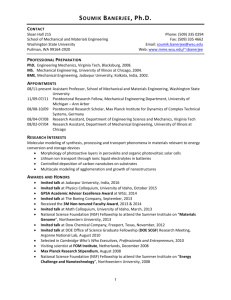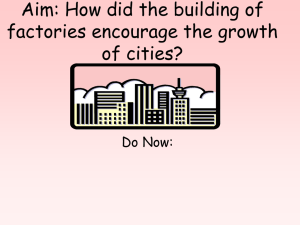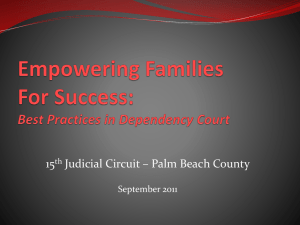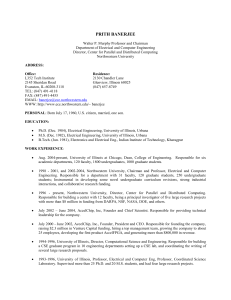Traditionell modern
advertisement
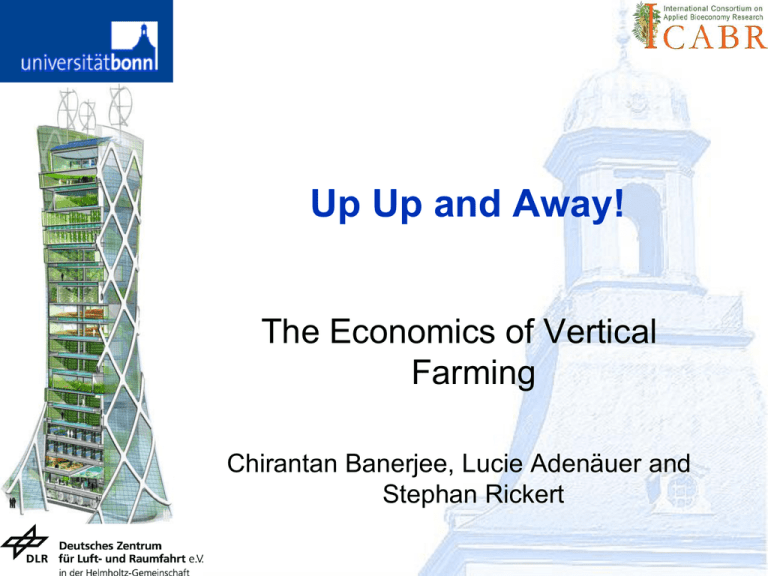
Up Up and Away! The Economics of Vertical Farming Chirantan Banerjee, Lucie Adenäuer and Stephan Rickert Content c.banerjee@ilr.uni-bonn.de Global situation Design of the Vertical Farm Facts and Figures SWOT Analysis Market Analysis Outlook 2 Global situation: where do we stand? c.banerjee@ilr.uni-bonn.de We need local food production technologies 38% of all land is used for agriculture 1 billion still undernourished 11% arable thereof 42% in India and China In rich countries, people spend 10% of their income on food, this is 50% in case of poor countries FOOD IS NOT BEING PRODUCED WHERE REQUIRED AND SUPPLY CHAIN IS NOT WORKING We need technology to adapt to consumer choice Striking difference between rich and poor consumer needs Increasing demand for especially protein rich diets THIS IS EXPECTED OF ALL COUNTRIES ON THE DEVELOPMENT BANDWAGON 3 Population Trends c.banerjee@ilr.uni-bonn.de 10 9 8 7 Total population (thousands) Rural population (thousands) Urban population (thousands) Millions 6 5 4 3 2 1 0 1940 4 1960 1980 2000 2020 2040 2060 Source: Population Division of the Department of Economic and Social Aairs of the United Nations Secretariat. World Urbanization Prospects: The 2007 Revision. Possible Solutions c.banerjee@ilr.uni-bonn.de We need to produce 100% more food! 2% increase of agricultural land expected until 2040 20% more food Another 10% is expected from increased cropping intensity Problem of land use for fuel How do we reach the missing 70% ? 5 Design of Vertical Farms c.banerjee@ilr.uni-bonn.de 6 Vertical farming is a system of commercial farming Plants are artificially stacked vertically above each other Plants, animals, fungi and other life forms are cultivated for food, fuel Through Controlled Environment Agriculture Design of Vertical Farms 7 Design of Vertical Farms 7 Design of Vertical Farms 7 Design of Vertical Farms 7 Design of Vertical Farms 7 Design of Vertical Farms 7 Facts and Figures c.banerjee@ilr.uni-bonn.de Personnel Power Demand Plant Seeds Water (recycled) Nutrients Fish Food 13 Facts and Figures c.banerjee@ilr.uni-bonn.de 14 Facts and Figures c.banerjee@ilr.uni-bonn.de Building Parameters Cost Scenarios Production Parameters with Salvage Value without Salvage Value Mechanised Probability distribution of costs per kg biomass Manual Aeroponics Production technology Elevated CO2 Normal High 30% Fixed Cost Margin Medium 20% Low 10% High 30% Variable Cost Margin Medium 20% Low 10% Cost of producing edible biomass is around 3.17 €/kg Worst case: 6.32 €/kg 15 SWOT Analysis c.banerjee@ilr.uni-bonn.de INTERNAL ANALYSIS STRENGTHS WEAKNESSES Industrialisation of Agriculture Space Independence from External Threats Light Energy generation Water Environment Energy Balance EXTERNAL ANALYSIS OPPORTUNITIES Consumer preference Sceptisism Climate change & Environmental concerns Existing patents Race for food soveriegnty Limited market Renewable Energy 16 THREATS Price and subsidies Market Potential c.banerjee@ilr.uni-bonn.de Criteria: Population above 5 million Per Capita income above $ 20,000 p.a. Short Term Market Potential Long Term Market Potential DESERTS DESERTS TAIGA TAIGA N = 47 17 MEGACITIES N = 2900 MEGACITIES Outlook c.banerjee@ilr.uni-bonn.de Economic research is required to ascertain: The energy balance The cost of production Linear programming of optimal cultivation strategy for cost minimisation The cost benefit analysis Consumer studies A comprehensive market analysis with identification of potential candidates More Ideas? 18 THANK YOU! http://www.ilr.uni-bonn.de/pu/publication/Publikationen/vertical_farming.pdf CHIRANTAN BANERJEE, LUCIE ADENÄUER AND STEPHAN RICKERT Institute for Food and Resource Economics, University of Bonn, Germany c.banerjee@ilr.uni-bonn.de
